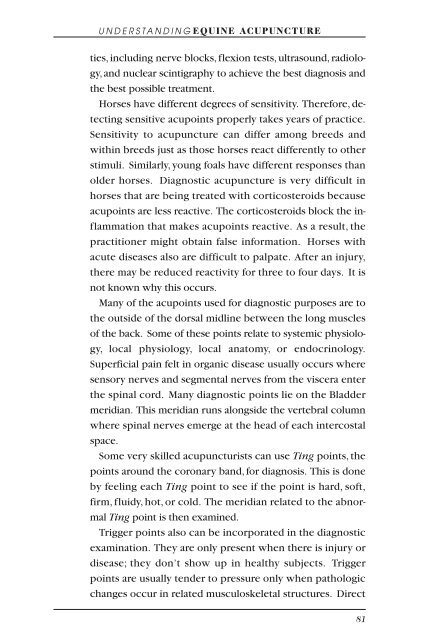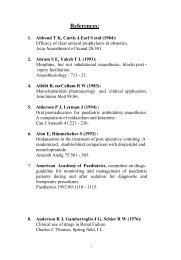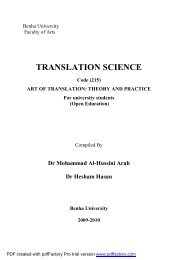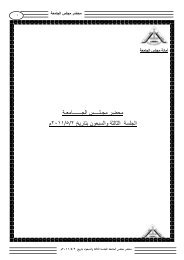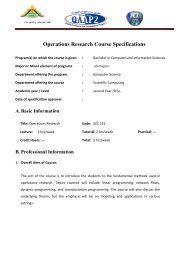at a glance
at a glance
at a glance
You also want an ePaper? Increase the reach of your titles
YUMPU automatically turns print PDFs into web optimized ePapers that Google loves.
UNDERSTANDINGEQUINE ACUPUNCTURE<br />
ties, including nerve blocks, flexion tests, ultrasound, radiology,<br />
and nuclear scintigraphy to achieve the best diagnosis and<br />
the best possible tre<strong>at</strong>ment.<br />
Horses have different degrees of sensitivity. Therefore, detecting<br />
sensitive acupoints properly takes years of practice.<br />
Sensitivity to acupuncture can differ among breeds and<br />
within breeds just as those horses react differently to other<br />
stimuli. Similarly, young foals have different responses than<br />
older horses. Diagnostic acupuncture is very difficult in<br />
horses th<strong>at</strong> are being tre<strong>at</strong>ed with corticosteroids because<br />
acupoints are less reactive. The corticosteroids block the inflamm<strong>at</strong>ion<br />
th<strong>at</strong> makes acupoints reactive. As a result, the<br />
practitioner might obtain false inform<strong>at</strong>ion. Horses with<br />
acute diseases also are difficult to palp<strong>at</strong>e. After an injury,<br />
there may be reduced reactivity for three to four days. It is<br />
not known why this occurs.<br />
Many of the acupoints used for diagnostic purposes are to<br />
the outside of the dorsal midline between the long muscles<br />
of the back. Some of these points rel<strong>at</strong>e to systemic physiology,<br />
local physiology, local an<strong>at</strong>omy, or endocrinology.<br />
Superficial pain felt in organic disease usually occurs where<br />
sensory nerves and segmental nerves from the viscera enter<br />
the spinal cord. Many diagnostic points lie on the Bladder<br />
meridian. This meridian runs alongside the vertebral column<br />
where spinal nerves emerge <strong>at</strong> the head of each intercostal<br />
space.<br />
Some very skilled acupuncturists can use Ting points, the<br />
points around the coronary band, for diagnosis. This is done<br />
by feeling each Ting point to see if the point is hard, soft,<br />
firm, fluidy, hot, or cold. The meridian rel<strong>at</strong>ed to the abnormal<br />
Ting point is then examined.<br />
Trigger points also can be incorpor<strong>at</strong>ed in the diagnostic<br />
examin<strong>at</strong>ion. They are only present when there is injury or<br />
disease; they don’t show up in healthy subjects. Trigger<br />
points are usually tender to pressure only when p<strong>at</strong>hologic<br />
changes occur in rel<strong>at</strong>ed musculoskeletal structures. Direct<br />
81


